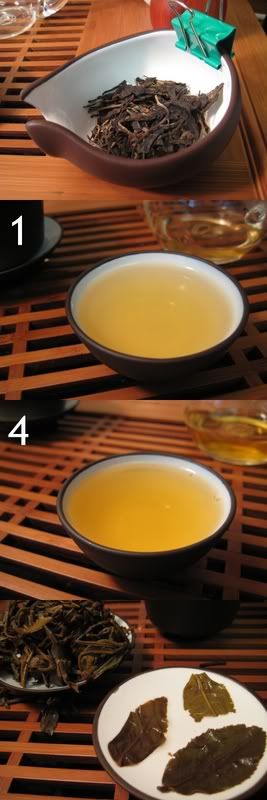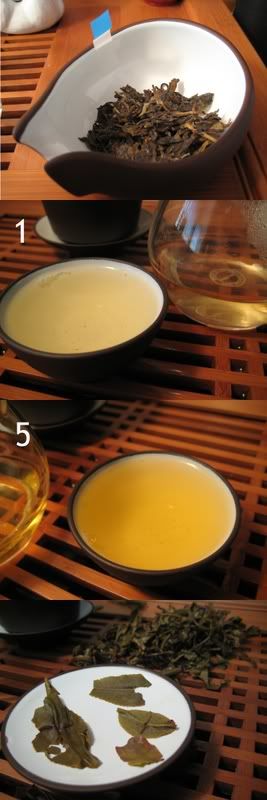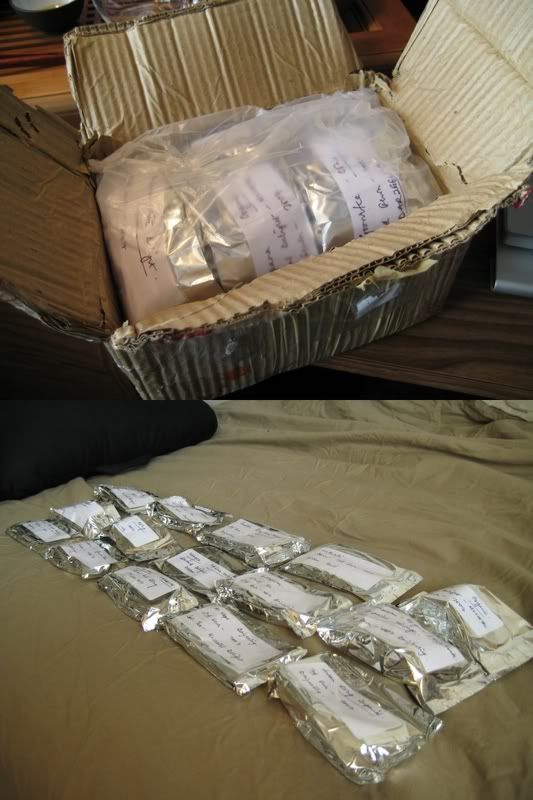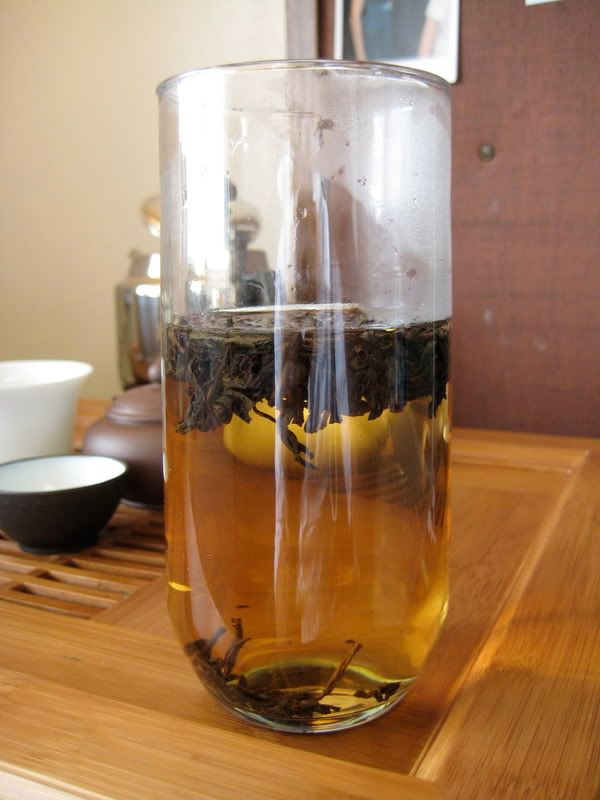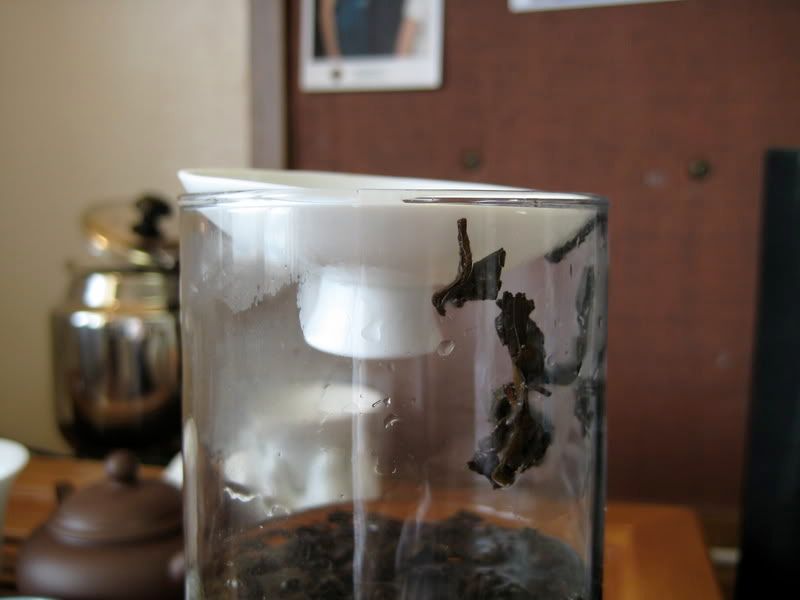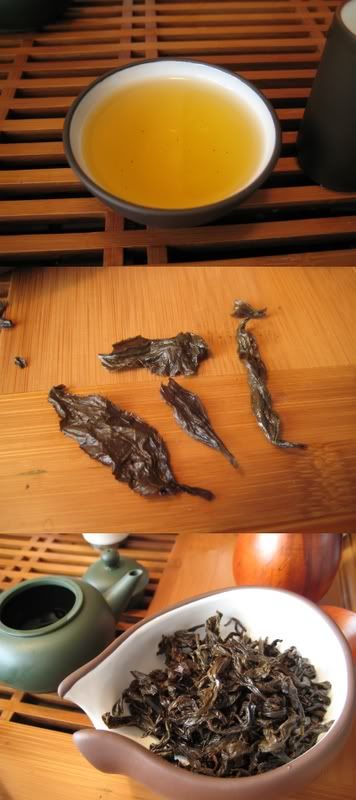You may ask, "What's all this talk of categories?" It seems to me that these teas would be best commented on in comparison to one another, but a comparison between a Darjeeling white tea and an Assam black wouldn't be very helpful, thus the division into different categories. The list of comparison groups I will post about are:
•Second Flush Darjeelings (this post)
•Muscatel Delights
•Darjeeling Greens and Whites
•Darjeeling Oolongs
•Assams
Before I move onto the first set of notes, I just want to thank Ankit and the rest of the Lochans once again for their generous gift, despite the reprimand I incurred the last time I did so. :) So without further ado...
General Darjeelings
 For these three teas, I set up a standard set of parameters to make comparison as fair as possible. Rather than endure the torturous brews that professional tasters work with, though, I opted for a more conservative preparation. These teas are each brewed with 5.0g (+/- .1g) leaf, off-boiling filtered tap water, for two minutes. I used the setup shown here— a glass teapot marked at the 12oz level, a measuring cup for decanting into, a wire mesh strainer, and a glass cup. I decided to brew these Western style because it is the style with which I am most familiar for brewing and tasting Darjeeling. Sorry, my gong fu enthusiast friends. :)
For these three teas, I set up a standard set of parameters to make comparison as fair as possible. Rather than endure the torturous brews that professional tasters work with, though, I opted for a more conservative preparation. These teas are each brewed with 5.0g (+/- .1g) leaf, off-boiling filtered tap water, for two minutes. I used the setup shown here— a glass teapot marked at the 12oz level, a measuring cup for decanting into, a wire mesh strainer, and a glass cup. I decided to brew these Western style because it is the style with which I am most familiar for brewing and tasting Darjeeling. Sorry, my gong fu enthusiast friends. :)Also shown here is the lineup of the three teas in this category. They are (clockwise from the top): Makaibari "Imperial Vintage," Castleton "Wiry Clonal Delight," and Goomtee "Wild Orchid." Close ups with more detail (and/or more blurriness) can be found below. So, without further ado:
2007 Goomtee "Wild Orchid" Second Flush Darjeeling
Sorry, the picture of this tea (left: top) came out pretty blurry. The leaves were typical of most Darjeelings— cut up (though not nearly to the level of CTC) and possessing a wide range of colors, from browns to tans to off-white buds, with the occasional green. This organic leaf gives off a bold aroma, and is intensely floral and woodsy.
The liquor is a peachy orange-amber color. It is very floral (perhaps this is the root of it's name?), has a medium body, and sweet flavor. There is some fruitiness and woodsiness in the background, and there is a crisp finish. Good stuff.
Though this is enjoyable, there are better Darjeelings out there. I should point out that there are far more that are worse, though, and I would still consider this to be a good tea.
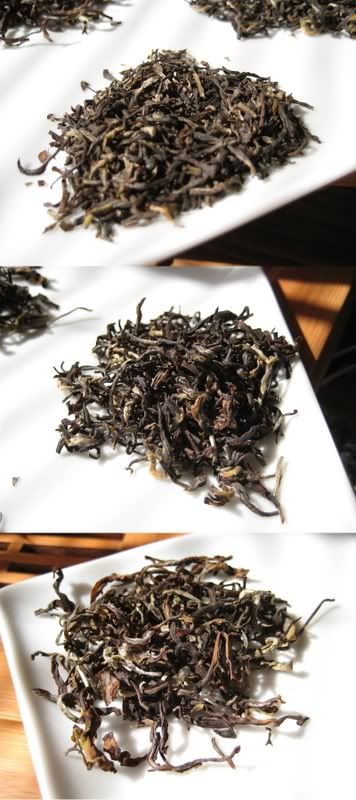 2007 Castleton "Wiry Clonal Delight" Second Flush Darjeeling
2007 Castleton "Wiry Clonal Delight" Second Flush DarjeelingThis is the only non-organic tea in this category. The dry leaf is, well, true to its name, as you can see in the picture (left: middle). This leaf appears slightly more oxidized than the other two, as evidenced by the darker color (which is more obvious in person) and lack of anything green. The aroma is fairly similar to the Goomtee— floral and woodsy.
Further evidence for this being a higher oxidized tea is the darker reddish-amber color of the liquor. Though it is true to its delicate Darjeeling nature, it is relatively "heavy." Spice and woodsiness are emphasized, though there isn't really any dominant flavor. It is sweet and smooth tasting, with a mild hui gan.
Like the Goomtee, this is enjoyable but not the best example of Darjeeling I have tasted. It is still quite good though, and the color of the liquor was a thing of beauty.
2007 Makaibari "Imperial Vintage" Second Flush Darjeeling
This is one of the more "guilt-free" teas on the menu, as it is both organic and fair-trade. (Don't worry though, my icy heart remains impartial.) First off, I should point out the beauty of the dry leaf (left: bottom). These are the loveliest Darjeeling leaves I have ever seen. Apart from the usual bouquet of browns, tans, off-whites and greens, these leaves look long and full— an uncommon find. Though it is not pictured, the wet leaves reflect this with whole leaves and intact leaf/bud complexes. I wasn't expecting this from a Darjeeling! Strangely, the leaves emitted only a hint of aroma. What was there was floral, fruity, and slightly woodsy.
 Though this brews a light color— pale yellow with a touch of amber&mdash it still has a good deal of flavor. I'm not sure if the lighter color is due to a lesser degree of oxidation or just the decreased surface area/volume ratio, but even when I bumped up the infusion time by a minute (to three minutes total), the color was only slightly darker. The brew holds a floral, delicate flavor and a crisp, clean texture. There is a refreshing minty aftertaste and a relatively strong hui gan here, as well. It is a bit on the light side in terms of flavor.
Though this brews a light color— pale yellow with a touch of amber&mdash it still has a good deal of flavor. I'm not sure if the lighter color is due to a lesser degree of oxidation or just the decreased surface area/volume ratio, but even when I bumped up the infusion time by a minute (to three minutes total), the color was only slightly darker. The brew holds a floral, delicate flavor and a crisp, clean texture. There is a refreshing minty aftertaste and a relatively strong hui gan here, as well. It is a bit on the light side in terms of flavor.Overall, I was impressed. The flavor may not have been the most thrilling so far, but the quality of the leaf was impeccable.
Wrap-up:
I think I liked the Castleton the most, followed by the Makaibari and then the Goomtee, but I can't be certain that I unlocked all that each had to offer. So far I have been impressed by the quality of each of these teas, and look forward to trying the rest. I have already started to dip into the "Muscatel Delights," but all I can say, without spoiling the next post, is to stay tuned for some real gems. Thanks for reading!


